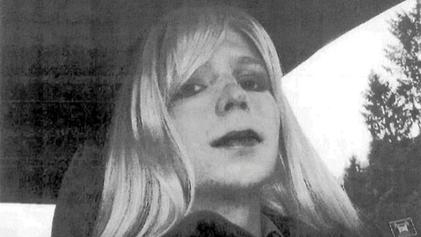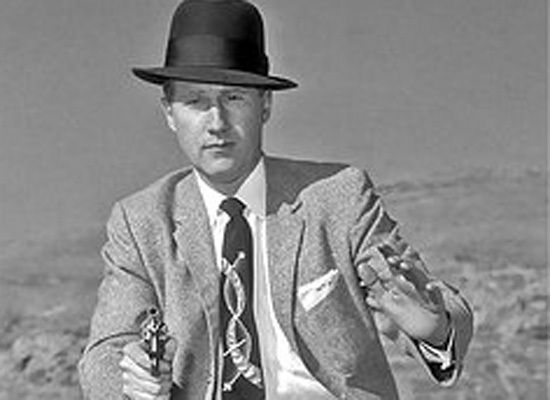
pick |

your |

patriot |

or |

traitor |
NETWORKED LIFE
Networked and Social Systems Engineering (NETS) 112
Fall 2016
Tuesdays and Thursdays 10:30-12, Berger Auditorium, Skirkanich Hall
Prof. Michael Kearns
Jump to the course schedule.
COURSE DESCRIPTION
Networked Life
looks at how our world is connected -- socially, strategically
and technologically -- and why it matters.
The answers to the questions above are related. They have been the subject of a fascinating intersection of disciplines, including computer science, physics, psychology, sociology, mathematics, economics and finance. Researchers from these areas all strive to quantify and explain the growing complexity and connectivity of the world around us, and they have begun to develop a rich new science along the way.
Networked Life will explore recent scientific efforts to explain social, economic and technological structures -- and the way these structures interact -- on many different scales, from the behavior of individuals or small groups to that of complex networks such as the Internet and the global economy.
This course covers computer science topics and other material that is mathematical, but all material will be presented in a way that is accessible to an educated audience with or without a strong technical background. The course is open to all majors and all levels, and is taught accordingly. There will be ample opportunities for those of a quantitative bent to dig deeper into the topics we examine. The majority of the course is grounded in scientific and mathematical findings of the past two decades or less (often much less).
Fall 2016 is the thirteenth offering of
Networked Life.
You can get a detailed sense for the course by visiting the extensive course web pages from past years:
[Fall 2015]
[Fall 2014]
[Fall 2013]
[Fall 2012]
[Fall 2011; hosted by now-defunct startup so lost forever]
[Spring 2010]
[Spring 2009]
[Spring 2008]
[Spring 2007]
[Spring 2006]
[Spring 2005]
[Spring 2004]
There is also a greatly condensed version of this class offered to the general public as part of the online education platform Coursera. While the Coursera version is not being offered online this semester, we will make the corresponding videos available in the Penn offering.
Networked Life is the flagship course for Penn Engineering's recently launched Networked and Social Systems Engineering (NETS) program. Throughout the course we will foreshadow material that is covered in greater depth in later NETS program courses.
TEXTS AND READINGS
The following book is recommended but not required; it is easy and entertaining reading, and provides a high-level introduction to some course themes:
The following two books are required; we will read most but not all of them:
In addition to readings from these texts, there will be frequent articles from the recent scientific and popular literature that will be provided directly on this web page at the appropriate points in the syllabus.
COURSE PERSONNEL
Prof. Michael Kearns, Course Instructor
mkearns@cis.upenn.edu
Levine Hall 509
Office hours: Tuesdays 12-1 PM (right after lecture), or by appointment
Adel Boyarsky,
Teaching Assistant
adelb@seas.upenn.edu
Office hours: Mondays 12-1 PM, bump space next to 502 Levine
Mary Peyton Sanford,
Teaching Assistant
mpsanford17@gmail.com
Office hours: Sundays 3:30-4:30 PM, bump space next to 502 Levine
Brad Thompson,
Teaching Assistant
wdbradthompson@gmail.com
Office hours: Wednesdays 11AM-12, bump space next to 502 Levine
LECTURE LOCATIONS AND TIMES
Attendance at the main lectures is considered mandatory for all enrolled students. They are held Tuesdays and Thursdays 10:30-12 in Berger Auditorium of Skirkanich Hall. There are no recitations for the course.
COURSE PREREQUISITES
Networked Life has no formal prerequisites, and is meant to be accessible to a broad range of students across SEAS, the College, and Wharton. No computer programming background is required, but students should be comfortable using computers and the Web, and accessing resources on the Internet.
The course is open to all majors and all levels.
CURRICULUM REQUIREMENTS FULFILLED BY NETS 112
COURSE FORMAT AND REQUIREMENTS
The main lectures for Networked Life will be in fairly traditional format, including class participation, discussion, and communal in-class experiments. PDF slides for all lectures will be provided, usually at least slightly in advance of the lecture itself.
There will be two or three homework assignments. These will include simple quantitative exercises, as well as essay questions, computer and web exercises. Collaboration on the homeworks is not permitted.
There will be a midterm, and a final exam. We may have a quiz or two as well.
It is anticipated that the homeworks/quizzes, midterm and final will each count for approximately a third of the overall grade.
Students are encouraged to bring articles, demos, web pages, news events, etc. that are relevant to course topics to the attention of Prof. Kearns. Extra credit will be given if the suggested material is used in the course (see the "Fourth Column" below).
Except for occasional hard-copy handouts distributed in lectures, all of the material for the course will be posted in the table below. Lecture slides, reading and homework assignments, in-class and out-of-class experiments, due dates, exam information, etc. will all be provided below. The materials posted are initially those from the last offering of the class, and will be gradually updated and possibly altered as we progress through the course. New materials and topics may be added as well. Reading and working ahead are encouraged, just be aware that things may change a bit as we proceed. It is every student's responsibility to monitor this schedule closely and regularly.
In the assigned readings below, "Watts" and "Schelling" refer to the two required texts cited above. Other readings will be directly provided as links to PDF documents. Unless specified otherwise, you should generally try to complete the assigned reading during roughly the period spanned by the dates given in the same row of the table.
The lecture slides are all in PDF format, but they may often contain links to documents in other formats, including Postscript, JPEG, video, etc. In order to view all of the linked content you may need to be using a computer with viewers installed for these formats. Note that since slides are revised shortly in advance of each lecture date, links to future decks may not yet be active.
In the "DATES" column of the table below, our current place in the schedule will be highlighted in red.
"THE FOURTH COLUMN" will be used to put links to class-related materials from the popular media, the web, etc. Extra credit will be provided to those who send me such material if it is used.
| DATES | SLIDES | ASSIGNMENTS AND ANNOUNCEMENTS | THE FOURTH COLUMN |
|---|---|---|---|
|
Lectures: Tu Aug 30 |
Course Introduction and Overview [PDF] [PPT] (Rev. 8/29) |
Here is the Coursera course overview video. Here is a document containing a brief background survey and our second communal social experiment. Please print them out, complete them (which should only take a few minutes), and return them at the start of the second lecture (Tue Sep 1), as we will analyze the results of the social experiment on the fly in class.
|
As sample Fourth Column material, A contagion oldie but goodie.
|
|
Lectures: Th Sep 1 Tu Sep 6 Th Sep 8 |
Structural Properties of Networks: Introduction [PDF] [PPT] (Rev. 9/8) |
Please read this lightweight introduction to some course concepts via a network analysis of squash matches. Link to the Erdos Number Project. Here are two Coursera videos that are related to this set of lectures: TA office hours have been announced, see Course Personnel section above.
|
From TA Brad Thompson, and apropos of my comments in the first lecture about phantom traffic jams. While we're on the topic of the sociology of mathematical collaboration, First-to-Field-Agent honors go to Colin Roberts for pointing out this recent article on the mega-ancestors of math.
|
|
Lectures: Tu Sep 13 Th Sep 15 Tu Sep 20 Th Sep 22 |
Contagion in Networks [PDF] [PPT] (Rev. 9/5) |
The following three assigned papers will be discussed in lecture. At a minimum
you should know what the main results are, but try to understand as much as you can.
Can Cascades be Predicted? Cheng, Adamic, Dow, Kleinberg, Leskovec. Structural Diversity in Social Contagion. Ugander, Backstrom, Marlow, Kleinberg. The Structural Virality of Online Diffusion. Goel, Anderson, Hofman, Watts. Here is a link where you can download NetLogo, a very nice app with many scientific simulations and models. Throughout the term we'll be examining several of the simulations under the Networks section, including this one, which we'll play around in class with. Here is a Coursera video related to this topic:
|
From F.A. Enoch Solano, an amusing introduction to Internet contagion. |